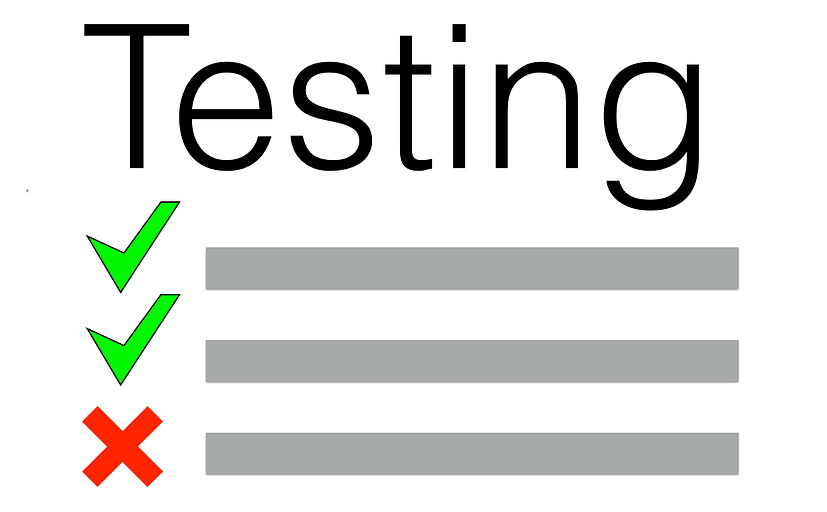Do you know GCP ? Test your knowledge on
Clinical Trials and the Good Clinical Practices
If you wish to apply for the Accelerated program, email your answers to this test to support@cra-school.com
1. What is the most important consideration during a clinical trial?
A. Adherence to protocol
B. Safety and well-being of the trial subject
C. Proof of efficacy
D. Sound statistical framework
2. Who is responsible for trial conduct at the site?
A. The Clinical Research Associate (CRA)
B. The Sponsor
C. The Principal Investigator (PI)
D. The Clinical Research Coordinator
3. What does ICH GCP defines as:
“A document describing the objective(s), design, methodology, statistical considerations, & organization of a trial.”
A. The Trial Master File
B. The Clinical Trial Agreement
C. The Monitoring Report
D. The Protocol
4. Prior to starting a clinical trial, the protocol must be approved by the:
A. Regional Regulatory Authority (e.g. the FDA)
B. The ethical review board (REB/IRB/IEC)
C. Sponsor
D. Trial Steering Committee
5. What must be obtained from all potential trial subjects before they take part in the trial?
A. Non-Disclosure Agreement
B. Legal waiver, absolving the sponsor from legal consequences
C. Physical exam
D. Signed Informed Consent
6. What is the minimal frequency for continuing review conduct by the Institutional Review Board / Independent Ethics Committee (IRB/IEC) regardless of the degree of risk to human subjects ?
A. Once per month
B. Every 6 months
C. Once per year
D. No minimum is stated in ICH GCP
7. What is the minimum number of members on an IRB/IEC?
A. No minimum number is stated
B. 4 members
C. 5 members
D. 6 members
8. There must be at least one IRB/IEC member with the following characteristic:
A. Representative of the Sponsor
B. Layperson (non-scientific)
C. A patient with the target disease/health concern of interest
D. Someone with a formal training in ethics
9. How long must the IRB/IEC maintain their records securely?
A. For 2 years following the start of the trial
B. For 2 years following completion of the trial
C. For 3 years following the start of the trial
D. For 3 years following the completion of the trial
10. What is the general purpose of the Investigator’s Brochure?
A. It is a comprehensive description of all clinical & non-clinical data known about the investigational product.
B. It describes the procedures and goals of the proposed clinical trial
C. It is a critical analysis by the Principal Investigator concerning the proposed trial
D. It is the legal agreement between the Principal Investigator and the sponsor
11. What word is missing about Informed Consent: “Neither the investigator, nor the trial staff, should ______________ or unduly influence a subject to participate or to continue to participate in a trial.”
A. Manipulate
B. Coerce
C. Convince
D. Compensate
12. What does GCP say about CRF corrections: “Any change or correction to a CRF should be dated, initialled, and explained (if necessary) and should not _________________”
A. Provide a data trail
B. Obscure the original entry
C. Leave visible the original entry
D. Contradict the original entry
13. What WORD IS MISSING? “All serious adverse events (SAEs) should be reported immediately to the sponsor except for _______________”
A. Those that the investigator deems unimportant
B. Those identified in the protocol as not requiring reporting
C. Those that are previously known to occur
D. Those that spontaneously resolve within 24 hours
14. The investigator must conduct the trial in compliance with 3 requirements. Which is not one of them?
A. GCP Guidelines
B. Applicable regulatory requirements
C. Approved protocol
D. FDA Certification
15. Which of the following is not one of the 3 main goals of clinical trial monitoring?
A. Ensuring protection of the rights and well-being of the trial subject
B. Ensuring that data from the trial is in line with the sponsor’s goals
C. Ensuring that data is accurate, complete and verifiable
D. Ensuring that trial conduct is in compliance with GCP, the protocol and regulations
16. What does GCP say about the required extent of monitoring activities?
A. They should be adequate
B. They should occur at least every month
C. They should occur at least every 2 months
D. No specific mention is made of this in GCP
17. What essential document does the following refer to?
“________ is a compilation of the clinical and nonclinical data on the investigational product(s) that are relevant to the study of the product(s) in human subjects. Its purpose is to provide the investigators and others involved in the trial with the information to facilitate their understanding of the rationale for, and their compliance with, many key features of the protocol, such as the dose, dose frequency/interval, methods of administration: and safety monitoring procedures.”
A. The Clinical Trial Protocol
B. The Trial Master File (TMF)
C. The Clinical Trial Agreement (CTA)
D. The Investigator’s Brochure (IB)
18. What is described in the following GCP definition:
“A systematic and independent examination of trial related activities and documents to determine whether the evaluated trial related activities were conducted, and the data were recorded, analyzed and accurately reported according to the protocol, sponsor’s standard operating procedures (SOPs), Good Clinical Practice (GCP), and the applicable regulatory requirement(s).”
A. An Internal Audit
B. For-Cause Inspection
C. Routine Inspection
D. Site Regulatory Analysis
19. What is described by the following GCP definition:
“An individual or juridical or other body authorized under applicable law to consent, on behalf of a prospective subject, to the subject’s participation in the clinical trial”.
A. Trial Subject Representative
B. Legal Representative
C. Legally Acceptable Representative
D. Legally Commissioned Representative
20. What does ICH GCP describe as:
“The operational techniques and activities undertaken within the quality assurance system to verify that the requirements for quality of the trial-related activities have been fulfilled.”
A. Quality Control
B. Quality Assurance
C. Audits
D. Inspections
21. What documents the existence of the subject and substantiates integrity of trial data collected?
A. Case Report Forms
B. Monitoring Reports
C. Informed Consent Forms
D. Source Documents
22. What document, created in 1964, provides the foundation for ethical considerations in clinical research?
A. Nuremberg Code
B. Helsinki Declaration
C. Belmont Report
D. WHO Guidelines
23. Which of the following statements best describes an Adverse Event?
A. Any untoward medical occurrence in a patient or clinical investigation subject administered a pharmaceutical product and which does not necessarily have a causal relationship with this treatment.
B. Any untoward medical occurrence in a patient or clinical investigation subject administered a pharmaceutical product and which has a definite causal relationship with this treatment.
C. Any untoward physical change in a patient or clinical investigation subject administered a pharmaceutical product which is strongly suspected of having a causal relationship with this treatment.
D. Any untoward medical occurrence in a patient or clinical investigation subject administered a pharmaceutical product and which is suspected of interacting with another drug.
24. What term describes “Documentation that allows reconstruction of the course of events.”
A. Source Documents
B. Case Report Forms
C. Monitoring Reports
D. Audit Trail
25. What is a term for “An investigational or marketed product (i.e., active control), or placebo, used as a reference in a clinical trial.”
A. Contrast Product
B. Comparator
C. Baseline Product
D. Reference Product


